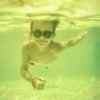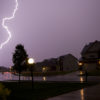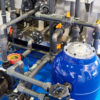Tis the season to have algae. Spring (April-June) is the most common time to have algae problems in your pool in Southwest Florida, for a few different reasons. Many homeowners or “do it yourself” pool operators make the mistake of using the wrong chemicals and/or the wrong methods of fighting algae in their pool, because they fail to identify the true source of the problem. In many cases, the algae will still survive an initial shock or even pop-up, almost out of nowhere, in a perfectly balanced pool and the operator will say. . . Why is this happening?
In most cases, they will be dealing with three different types of algae, and each of these require a different course of action.
1. Yellow Algae (mustard)
This is probably the most common type of algae problem that homeowners face in Southwest Florida. We do not recommend using any liquid algaecides. A pure “yellow treatment” is sufficient (containing sodium bromide). There are many algaecides that will kill yellow algae but most do not remove the source of the algae from the water, which is typically a large amount of organic waste or contaminants.
The most common culprit is a high phosphate level. Phosphate is often the byproduct of organic materials or other elements that eventually get broken down by the sanitizer in the pool and become a new compound. Most cartridge filters will not remove this invisible contaminate from the water without help. We recommend treating the pool with a phosphate remover. Always test for phosphates before assuming that this is the source of your yellow algae (with a phosphate test kit). Other reasons that you might be having trouble keeping the yellow away might be high total alkalinity or high cyanuric acid/chlorine stabilizer. The latter can be a result of using too many trichlor tablets or other “stabilized” chemicals. It will saturate the water an “lock-out” the sanitizer, keeping it from breaking down the algae spores.
You can start to prevent high phosphate by taking a good look around your pool area. Any potted plants on the lanai or near the pool will almost always lead to high phosphate levels, eventually. Also, make sure that your overflow or auto-fill is not in a place where dirt and run-off can backwash into your pool, during heavy rain or watering. Plant life and soil can poison your pool if not monitored and maintained properly. Finally, many phosphate problems come from the swimmers themselves. Lotions, soaps and hair products will almost always be broken down into phosphates.
Rinse off before you dive in for the first time!!!!!
2. Green Algae
Green algae usually occurs from an extended period of poor chemistry, usually due to either a large amount of fresh water being introduced to the pool, or a period of no maintenance or care. Most green algae does not require any fancy chemicals, just proper PH balance and a thorough “shock”, followed by an extended period of filtration (24-48 hours) and one or more filter cleanings. A relatively “fresh” filter will speed up the clearing process (a new cartridge or internal cleaning, for D.E. filters). It often helps to use cellulose fiber to aid the clearing process, but this is only necessary in extreme cases, where you cannot see the bottom.
We can perform all of these tasks for you, and we also sell and deliver the products used. It is usually worth it to pay the additional labor for us to perform the treatment, although it is not required. Contact us for prices and help identifying any of these problems.
3. Black algae (mold spots)
Test for high phosphate contamination (explained above) and it if it high, treat that first. Some good old elbow grease (with a wire brush) and some time in the pool will take care of an isolated spot or two, provided that the water quality is right. Vacuum the mold and clean it from the filter immediately, once it is removed.
If it is too late, and your pool is covered in spots, we recommend using at least 2 pounds (per 10,000 gallons) of an algae destroyer. This is also known as granulated tri-chlor. Make sure to follow the directions on the container. It should sit, undisturbed, on the bottom for at least 24 hours.



